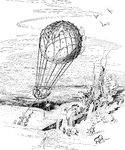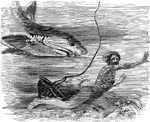Clipart tagged: ‘shark’

Angelfish
"Notwithstanding its name is is a hideous-looking creature, with two enormous pectoral fins, said to…
Gangetic Dolphin
A dolphin with about 120 teeth, 50 vertebrae, extremely narrow jaw, no pelvic bone, rudimentary eyes,…
Smooth Hound
"Noted for the smoothness of its skin; sometimes called Ray-mouthed Dog; takes bait, but is…

Mackerel Shark
Lamniformes is an order of sharks, also known as mackerel sharks (which may also be used to refer to…
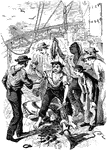
Men Cutting a Shark Open
Men on a ship cutting open a shark to find things that have fallen overboard.

Porbeagle
"Six feet long, and derriving its name from a resemblence of form to the porpoise. Common in European…
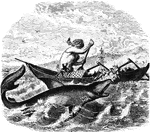
Shark
"Theses are at once distinguished by their elongated, spindle-shaped bodies, their branchial apertures…

Shark
An extensive genus of fishes of the ray family, found widely distributed in the ocean, but most abundantly…

Shark
Tangrams, invented by the Chinese, are used to develop geometric thinking and spatial sense. Seven figures…

Shark
Tangrams, invented by the Chinese, are used to develop geometric thinking and spatial sense. Seven figures…

Shark
Tangrams, invented by the Chinese, are used to develop geometric thinking and spatial sense. Seven figures…

Shark
Tangrams, invented by the Chinese, are used to develop geometric thinking and spatial sense. Seven figures…
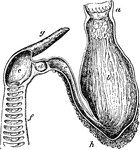
Shark Stomach
"Siphonal stomach and spiral valve of Basking-shark (Selache). a, esophagus; b, cardiac portion of stomach;…
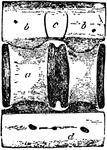
Shark Vertebra
"Lateral view of caudal vertebra of Basking Shark (Selache mazima). a, centrum; b, neurapophysis; c,…
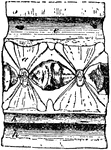
Shark Vertebra
"Longitudinal section of caudal vertebra of Basking Shark (Selache mazima). a, centrum; b, neurapophysis;…

Shark Vertebra
"Transverse section of caudal vertebra of Basking Shark (Selache mazima). a, centrum; b, neurapophysis;…

Hammerhead Shark
"Having a body like other sharks, but with a double snout like a double-headed hammer, and having an…

Placoid Scales of a Shark
These placoid scales are found in cartilaginous fishes. They are also called dermal denticles. These…

Thresher Shark
"Is twelve to eighteen feet long, the tail nearly as long as the body; it uses this member for attacking…

White Shark
"Has the body elongated, swims with great ease, measures from fifteen to twenty feet, is extremely voracious,…
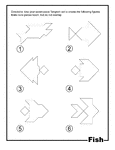
Fish Outline Tangram Card
Outlines of fish (shark, parrot fish, angelfish, flounder, hogfish, beta) made from tangram pieces.…
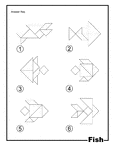
Fish Outline Solution Tangram Card
Solutions for outlines of fish (shark, parrot fish, angelfish, flounder, hogfish, beta) made from tangram…
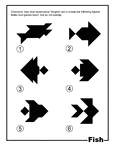
Fish Silhouette Tangram Card
Silhouette outlines of fish (shark, parrot fish, angelfish, flounder, hogfish, beta) made from tangram…
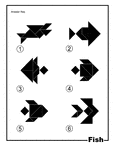
Fish Silhouette Solution Tangram Card
Solutions for silhouette outlines of fish (shark, parrot fish, angelfish, flounder, hogfish, beta) made…
